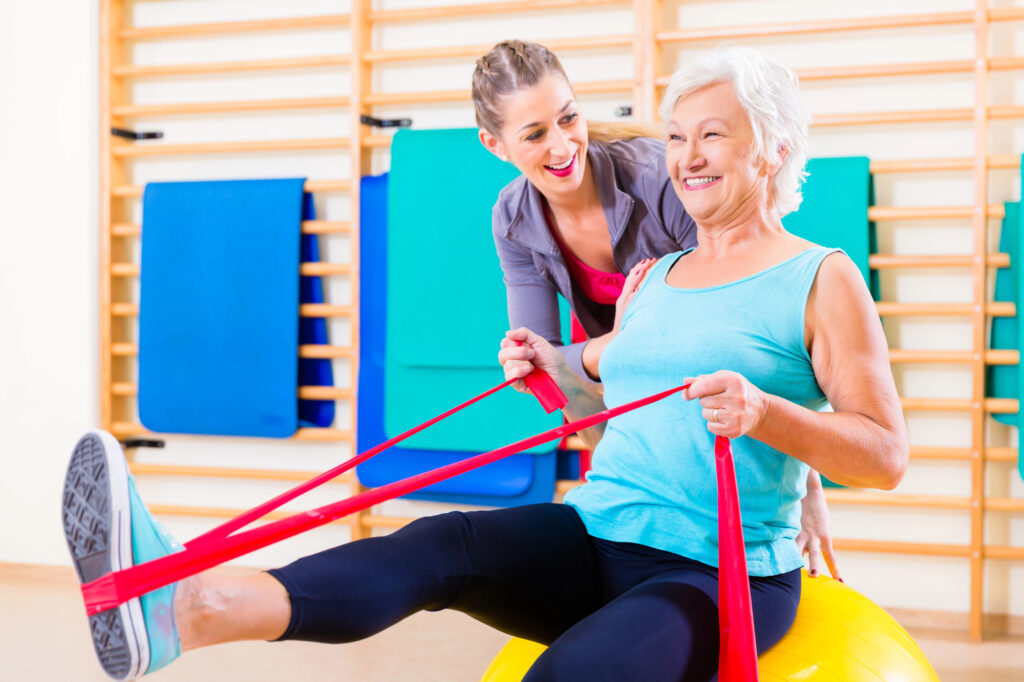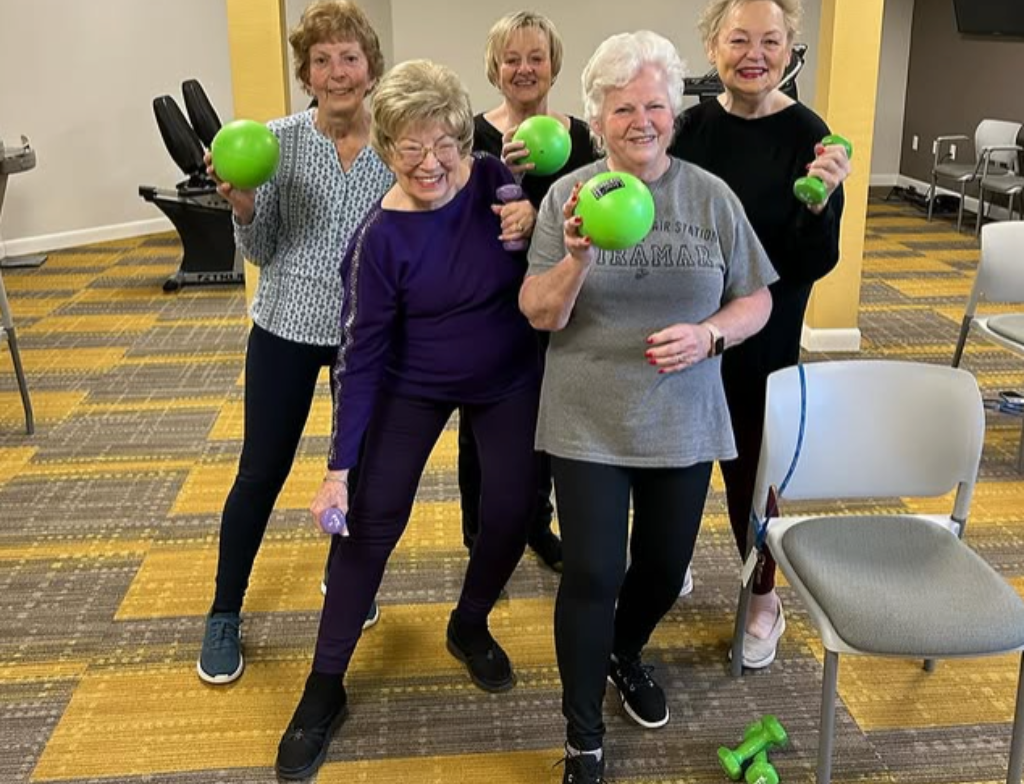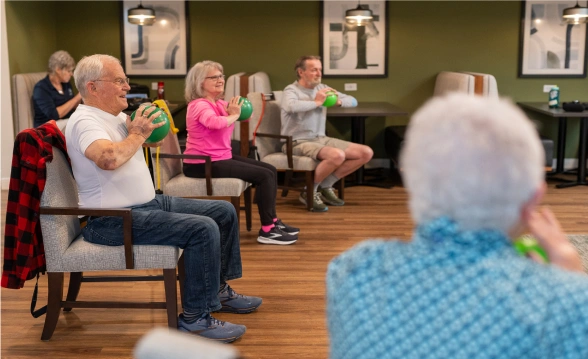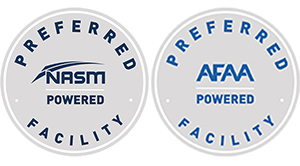As we age, maintaining physical activity becomes increasingly important for overall health and well-being. However, many seniors shy away from traditional weightlifting due to concerns about injury or intimidation from heavy gym equipment.
Thankfully, resistance bands offer a safe and effective alternative that’s perfect for building muscle, boosting balance, and improving coordination—all from the comfort of home, no gym membership needed.
Integrating resistance band workouts into your fitness regimen can seem daunting at first, but with a few quick tips, you can confidently embark on this low-impact journey to better health.
Whether you’re a complete beginner or looking to expand your existing routine, these straightforward guidelines will help you maximize your workouts while minimizing the risk of injury. Let’s explore the essential tips that will empower you to get started with resistance band workouts for seniors!
What are Resistance Bands?
Resistance bands are versatile, stretchable tools that you can use to enhance your workout. They’re, quite literally, elastic bands that can be used to create resistance when stretched by a person. The person is forced to use their muscles and strength to stretch them in various forms, making them a perfect strength exercise for people who need to develop it the most.
They’re especially beneficial for you as a senior or if you’re focused on aiding seniors in maintaining their fitness levels safely. These fitness bands come in various strengths, making them an effective workout routine for all fitness levels, and they allow for a range of resistance exercises that can be adjusted according to individual needs.
You’ll find both bands with handles and without handles. A band without handles might be a bit more difficult for seniors to manipulate, especially those with symptoms of arthritis pain or similar conditions. Still, they’re nonetheless an incredibly accessible and easy form of exercise.
You can incorporate them into daily exercise programs to improve flexibility, strength, and overall health.
As you assist others, remember that using resistance bands is about adapting exercise to each person’s capabilities, encouraging gradual progress without strain.
The Benefits of Resistance Bands for Working Out
Resistance bands, or exercise bands, offer you a versatile way to boost your fitness, even as a senior. All you need are your limbs, your body weight, and a will to do them.
Here are some of the many benefits of this type of exercise tool:
Healthier Joints
Using resistance bands can significantly enhance joint health, particularly for seniors.
The resistance band workout minimizes the strain on joints while still strengthening the muscles around them, offering both protection and an increased range of motion. As you continue to perform these exercises, you’ll notice you can perform daily activities with less discomfort and more ease.
Regular use of resistance bands helps maintain and even improve joint flexibility and durability. It’s a caring approach to keeping movements fluid and your independence intact, making every day a little easier and much healthier.
Healthy Body Weight
These workouts offer a fantastic way to engage in strength training for seniors without the harsh impact on joints but also help build muscle, which is crucial as muscle mass naturally diminishes with age. Building muscle not only enhances your metabolism but also assists in burning more calories, even while at rest.
The benefits of incorporating resistance band workouts into your routine are significant. They allow for a variety of exercises that target different muscle groups and can also double as cardio exercises, making your workout comprehensive and effective.
Embracing exercise bands can lead to sustained weight management and a healthier, more active lifestyle.
They’re Low Impact
Why consider resistance band workouts? They’re a low-impact form of exercise, making them a safe choice for you, especially if you’re concerned about injuries.
Unlike high-impact exercises that can jar your joints and lead to discomfort, resistance bands are simple exercises that provide a smooth, controlled tension that gently strengthens your muscles without unnecessary strain. This means you can maintain your fitness without risking harm to your joints or exacerbating existing conditions.
Using resistance bands also helps manage the tension exerted on your body. You can adjust the intensity easily, ensuring you don’t overdo it.
This adaptability makes band exercises ideal for easing into exercise routines, particularly if you’re recovering from an injury or just starting your fitness journey.
Improve Muscle Strength
These exercise bands also significantly enhance muscle strength. When you use a resistance band, you’re engaging multiple major muscle groups.
Each stretch and pull helps to improve muscle strength, ensuring you’re up to the tasks life throws your way.
Incorporating resistance band exercises into your routine, you can slowly build strength without the harsh impact of heavier weights. This means you can keep your muscles robust in a safe, gradual manner.
Regular use of these bands helps maintain strength and reduce the muscle loss that comes with age across different muscle areas, from the arm and core to the leg muscles, preserving your vitality and independence, which is crucial for continuing to help others.
Affordable Strength Training
Investing in your health doesn’t have to drain your wallet. Exercises with resistance bands are a fantastic, cost-effective way to strengthen your muscles and increase your overall fitness. You won’t need fancy or expensive exercise equipment that you might get bored with after a few days.
It’s an economical workout plan for either seniors or people of any age, with no barrier to entry except your willingness to be healthy.
Resistance Training Increases Bone Density
Building on the economic and adaptable nature of resistance bands, it’s important to note their role in improving bone health, particularly for seniors.
Resistance training increases bone density, making it a crucial practice as you age. When you perform exercises targeting your shoulders and chest, you’re not only enhancing muscle strength but also fortifying your bones.
These activities stimulate bone growth, which is vital to prevent fractures and osteoporosis. By integrating resistance bands into your routine, you’ll apply gentle yet effective pressure on these areas, promoting bone health without the strain of heavy weights.
This method is safe, manageable, and highly beneficial, ensuring you maintain your independence and well-being for years to come.
Bands are Versatile
While resistance bands may seem simple, their versatility in workouts is unmatched, especially for seniors. These bands can be easily adapted to suit different fitness levels and help target specific areas of the body.
You can use them in several positions (as we’ll explain later), like in a squat position, on your shoulder blades, against a wall, standing up, or even in a chair.
Improves Balance and Stability
As you age, maintaining balance and stability becomes crucial, and resistance bands are excellent tools in this regard.
Engaging in resistance band workouts can significantly enhance your core strength, which is vital for good balance and stability. These workouts gently encourage your muscles to adapt and strengthen, providing you with a firmer base and better overall control of your movements.
This improvement in muscular strength directly contributes to a decrease in fall risk, which is a common concern for seniors.
By integrating resistance bands into your exercise routine, you’re not only working towards a more stable and confident stance but also ensuring a safer, more independent lifestyle.

Resistance Band Exercises for Seniors
Now that you’re familiar with the benefits of resistance bands let’s explore some specific exercises you can incorporate into your routine.
Squats
Many seniors find squats to be an effective way to maintain strength and flexibility.
Using a resistance band can enhance this exercise, adding an extra layer of resistance that helps improve muscle tone and stability. You’ll appreciate how these bands make your workouts more challenging yet accessible.
Here are some tips to get you started:
-
- Stand on the band: Place your feet shoulder-width apart on the resistance band.
-
- Hold ends with hands: Grip the ends of the band with both hands at shoulder level.
-
- Squat down slowly: Bend your knees and lower your body as if sitting back into a chair, then slowly rise back up.
Chest Pull
Targeting your chest muscles, the chest pull is a fantastic resistance band exercise for seniors looking to enhance upper body strength and improve posture.
By strengthening these muscles, you’re not just boosting your own health; you’re also better equipped to perform everyday tasks that benefit others, like lifting groceries or playing with grandchildren.
To do a chest pull, hold your resistance band taut in front of you with both hands.
Slowly pull the ends outward, keeping your arms parallel to the floor. Focus on squeezing your chest muscles as you pull. Hold the position briefly, then return to the starting point..
Consistency in this exercise will significantly improve your upper body strength, making it a great addition to your routine.
Reverse Fly
To strengthen your upper back and shoulder muscles, try incorporating the reverse fly into your resistance band regimen. This exercise is particularly beneficial for seniors looking to maintain or enhance their mobility and daily functionality.
It’s simple and requires just your resistance band and a bit of space. Just place a band under your left foot or right foot (whichever you want to start with), with the other foot behind, and then slightly bend your elbows and lift your arms outwards until you reach shoulder height.
Hold for a couple of seconds and slowly release, repeating a dozen times.
-
- Start Small: Begin with a light resistance band and increase tension as you become more comfortable.
-
- Consistency is Key: Aim for two to three sets twice a week to see improvements.
-
- Focus on Form: Keep your movements slow and controlled to maximize the benefits and minimize the risk of injury.
Leg Press
This exercise is perfect for seniors looking to maintain leg strength and mobility. To start, sit on a chair with your feet flat.
Place the resistance band under your feet, holding the ends with both hands. Gently push your feet forward until your legs are almost straight, then slowly return to the starting position.
This controlled movement helps build muscle without straining your joints.
Keep the movements smooth and steady, ensuring your safety and maximizing the benefits.
Chest Press
While strengthening your lower body is crucial, don’t forget about your upper body. The chest press with a resistance band is a fantastic exercise for seniors, helping to maintain strength and flexibility in the chest and arms.
Here’s how to do it effectively:
-
- Find a Comfortable Seat: Sit on a sturdy chair with your back straight and feet planted on the floor. You can do this standing up as well, but seniors have to be careful and may want to first try it sitting down.
-
- Position the Band: Hold the resistance band with both hands and loop it behind your back, level with your chest.
-
- Press Forward: Extend your arms forward, stretching the band away from your body, then slowly return to the starting position.
This exercise not only boosts your upper body strength but also enhances your ability to serve and care for others.
Chest Press with Band Attached to Anchor
Building on the basic chest press, you can enhance its effectiveness by anchoring the resistance band. This variation is particularly beneficial for seniors, as it provides a stable way to increase muscle strength in the chest and arms without the need for heavy weights.
To start, securely attach your resistance band to a stable anchor point at chest height. Facing away from the anchor, grasp the handles with both hands. Step forward until the band is slightly stretched.
With elbows bent and palms facing down, press your arms forward until they’re fully extended, then slowly return to the starting position. This exercise not only helps build upper body strength but also supports your daily functional movements.
Glute Bridges
Glute bridges are a fantastic exercise for seniors looking to strengthen their lower body, particularly the glutes and hamstrings.
By incorporating a resistance band, you enhance the effectiveness and add a level of challenge that’s just right for you.
You first have to lay down a yoga mat or find a comfortable, flat surface to lie on, protecting your back and ensuring stability.
Then: Position the Band: Sit on the floor and loop the resistance band around both thighs, just above your knees. The band should be snug but not overly tight.
-
- Lie Down: Lie on your back with your knees bent, feet flat on the floor about hip-width apart. Make sure the resistance band remains positioned just above your knees, and check that your feet are positioned correctly under your knees, your arms flat on the sides, and your palms facing down.
-
- Engage Your Core: Before you begin, tighten your abdominal muscles slightly to stabilize your spine.
-
- Lift Your Hips: Exhale as you push through your heels and lift your hips off the ground towards the ceiling. Go up until your shoulders, hips, and knees form a straight line. Squeeze your glutes tightly at the top of the movement, making sure not to overextend your back.
-
- Press Outward: While at the top of the bridge, press your knees outward against the resistance band. This engages the outer glutes and hip muscles. Then, hold for a few seconds and lower your hips slowly. Avoid arching your back excessively.
-
- Repeat: Perform the desired number of repetitions and sets. Typically, 10-15 repetitions for 2-3 sets is a good start, depending on your fitness level.
Calf Press
Many seniors find that adding calf presses to their resistance band workouts greatly enhances lower leg strength and improves balance.
To perform a calf press, you’ll need a sturdy chair and your resistance band. Start by sitting comfortably with your feet flat on the floor. Loop the resistance band around the ball of one foot, holding the ends with both hands.
Gently press your foot forward, stretching the band as you extend your toes, then slowly return to the starting position. This movement targets the calves, which are crucial for mobility and stability.
Repeat the exercise with each leg, aiming for three sets of ten repetitions. Regular practice can significantly bolster your lower legs, aiding your daily activities and reducing fall risk.
Bicep Curls
Bicep curls with a resistance band are an effective way to strengthen your arm muscles, essential for daily tasks like lifting groceries or opening jars.
As a senior, it’s important to keep these muscles robust so you can continue serving your community and loved ones with ease.
All you need to do is stand up, place a band under a foot with your feet hip-width apart, and hold the handles or just the plain band on each hand with your arms fully extended.
Then bend your arms towards the shoulders, and with control and your arms straight, unbend your elbows and go down.
-
- Start Simple: Begin with a light resistance band and gradually increase the tension as your strength improves.
-
- Focus on Form: Keep your elbows close to your body and curl the band slowly, focusing on the contraction of your biceps.
-
- Frequency Matters: Aim to incorporate bicep curls into your routine twice a week to maintain muscle tone and function.
Bent Over Row
Why not strengthen your back and improve posture with the bent-over row using a resistance band? This exercise is fantastic for seniors looking to enhance their daily functional movements.
First, stand with your feet shoulder-width apart, stepping on the resistance band to secure it under both your feet. Grasp each end of the band, hinging forward at your hips with a slight bend in your knees. Keep your spine neutral as you pull the band towards your waist, elbows sliding past your sides.
Then, slowly release back to the starting position. Regularly incorporating this workout can help you maintain your independence and serve others more effectively by keeping your back strong and functional.
Lateral Raise
This exercise is perfect for seniors looking to maintain an active lifestyle.
-
- Start with your feet: Stand on the resistance band with feet shoulder-width apart.
-
- Grip and lift: Hold the ends of the band, palms facing in. Raise your arms to the sides until they’re parallel with the floor, then smoothly lower them back. It will look almost as if you’re trying to fly.
-
- Keep your pace: Perform this move slowly and with control to maximize benefits and reduce the risk of injury.
Join Live 2 B Healthy for Certified Senior Training Classes with Resistance Bands and More
Joining Live 2 B Healthy offers you access to certified resistance band classes along with a variety of other tailored fitness programs.
These classes are specifically designed to meet the unique needs of seniors, ensuring that you can safely enjoy the benefits of resistance band workouts and many other programs to keep you healthy and active. By participating, you’ll not only enhance your physical strength and flexibility but also contribute positively to your community by staying active and healthy.
Live 2 B Healthy‘s certified instructors are dedicated to helping you achieve your fitness goals in a supportive and encouraging environment.
They understand the challenges you might face and are there to guide you every step of the way.
Don’t miss the chance to improve your well-being while connecting with others who share your dedication to health.










